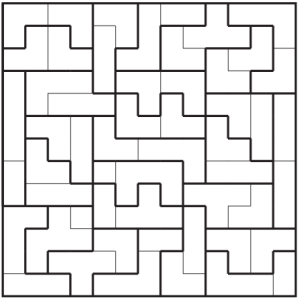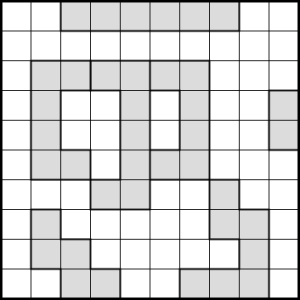Daily League Update –
Wednesday – Pointing Evens Sudoku by Bastien.
Thursday – Argyle Sudoku by Rishi.
I have many things going on right now. Among them, is the fact that I have to wake up early tomorrow, as I have been called to my college to attend the Annual Day prize function where they will acknowledge my puzzle-related achievements in the past year. Obviously, this is a really nice thing to happen, and I will need to sleep early to make sure I make it on time tomorrow. What this means is that there is no way I expected to be posting today.
However, I had to squeeze out 10 puzzles for the newspaper so I can send a batch tomorrow, and while doing so, this LITS was produced. I made a mistake while drawing it in my notebook, but then realized that this is still solvable. But its too hard for me to send for the newspaper. So, here it is. Its still probably just a tricky medium for an experienced WPC level solver though. Enjoy!


















